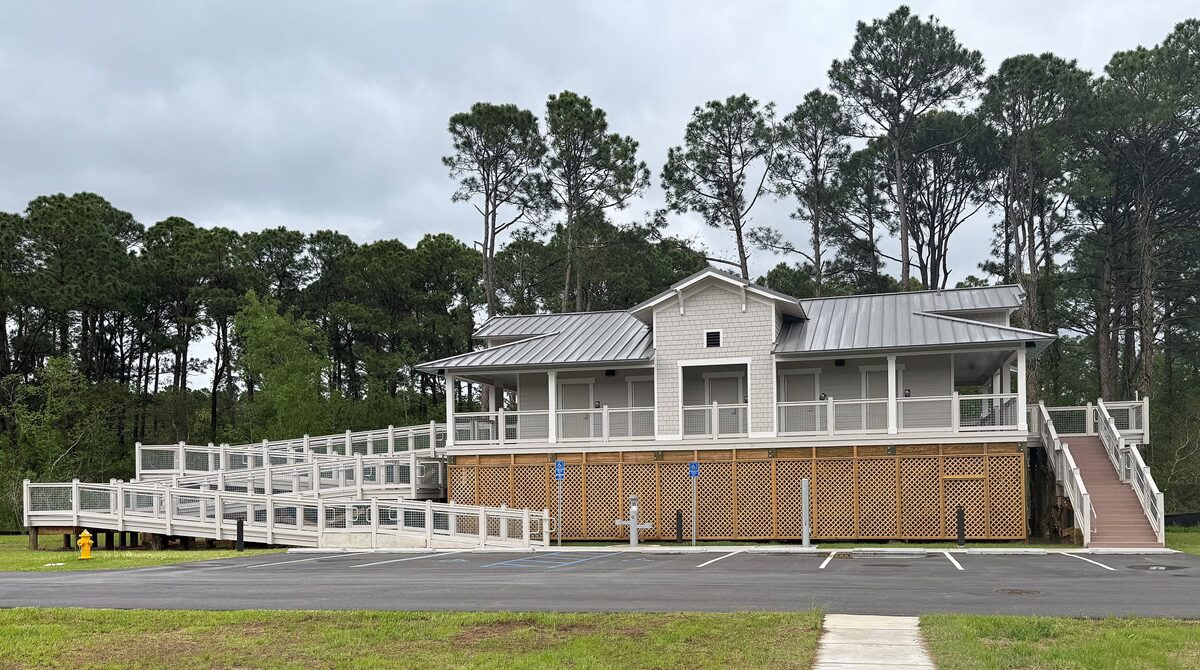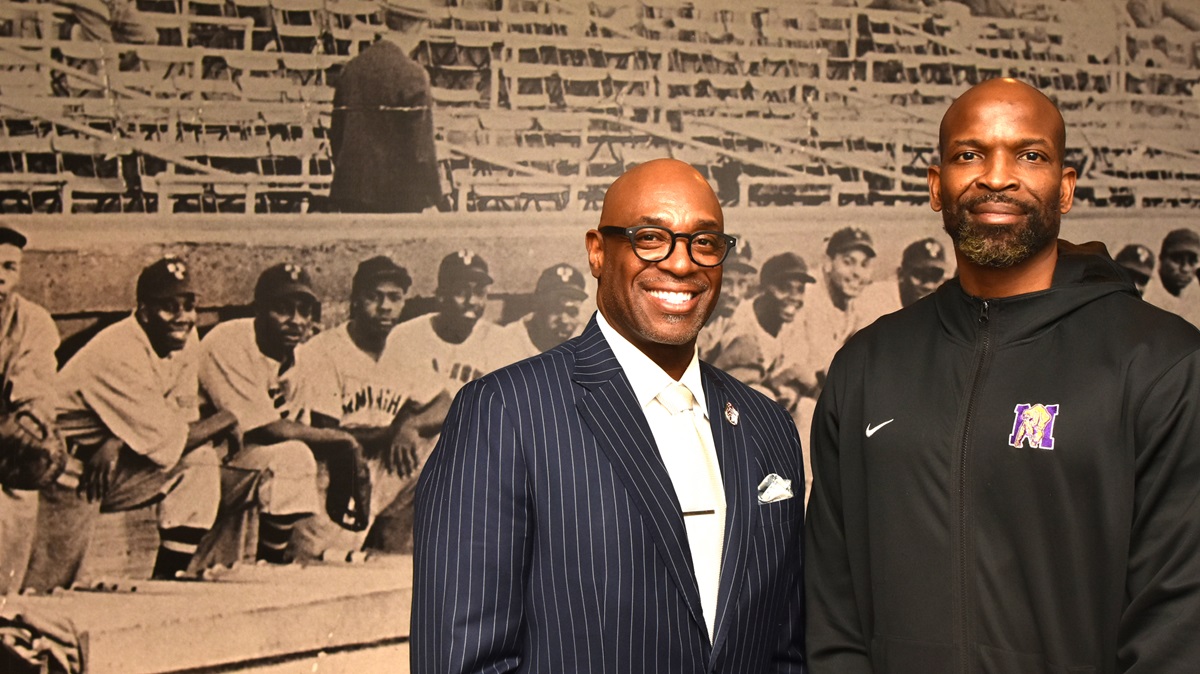Birmingham’s history captured in postcards from a century ago

Steve Gilmer, owner of What's on 2nd, started a collection of Birmingham postcards that now belong to fellow collector Randy Merritt. Gilmer said they are snippets of history. (Phil Free / Alabama NewsCenter)
A horse race at the Alabama State Fair in October 1906, a view of the old Terminal Station in downtown Birmingham, picketers at a now-defunct mine in west Jefferson County, and street scenes featuring men in suits and top hats and ladies in old-fashioned long dresses carrying parasols. Those are among the many snapshots in time that would have been lost forever without postcards.

Alabama NewsCenter is presenting a continuing series marking the 150th birthday of the city of Birmingham.
RELATED: Birmingham birthed from ‘weeds and briars’ 150 years ago today
RELATED: Birmingham’s founding full of drama and paradox
RELATED: Birmingham officially launches its 150th anniversary celebration
RELATED: Miss Fancy the elephant returns triumphant to Birmingham’s Avondale Park
RELATED: Cholera and COVID: Birmingham’s two historic health crises
Steve Gilmer said postcards are more than inexpensive souvenirs that visitors to Birmingham can bring home as keepsakes from vacation.
“They are a historic record of the glorious years of the Magic City and its growth starting in the early 1900s,” said Gilmer. “They used to be in every drugstore, every filling station and every 10-cent store. Now it’s hard to find postcards of the city.”
Historic Birmingham postcards offer glimpse of early days of the Magic City from Alabama NewsCenter on Vimeo.
But it’s not impossible. As the city commemorates its 150th anniversary this year, the curious can find hundreds of postcards depicting past and present Birmingham and Jefferson County at What’s On 2nd, Gilmer’s popular collectibles and antiques store.
What’s On 2nd features hard-to-find and sometimes quirky or nostalgic items, instead of the more commonplace decorator antiques. Located in the historic Spanish Stores Building in Birmingham’s Five Points South neighborhood, the eclectic shop first opened in 2007 on Second Avenue North, thus inspiring the name.
Shoppers will find everything from 1950s and 1960s rock ‘n’ roll albums, movie-themed toys, comic books and vintage photos to folk art, advertising and architectural fragments, books and quaint furniture pieces.
But postcards of all varieties, including 500 to 700 that feature the city and its neighborhoods, and surrounding communities, are favorites among customers, said Gilmer, a longtime Birmingham historian and collector.
“I’m always looking for something I haven’t seen before and then doing research on it,” said Gilmer, who has a bachelor’s degree in history from the University of Alabama. “Learning is all part of this business and what keeps it fun. If you can buy something for a nickel and learn about it, it enriches you in a totally different way.”
A lifetime passion
In addition to selling postcards, Gilmer is a collector in his own right. He has long had a fascination for “collecting paper things of all kinds.”
“I got into postcards when I was a kid,” Gilmer said. “One time I was rummaging through my great-aunt’s old trunk after her death. She had traveled with her husband, who was a Singer Sewing Machine salesman in Indiana and Illinois. She had postcards from 1914 and 1915, and had saved them all. I was hooked.”
Gilmer said he purchased his first Birmingham postcard when he was “about 8 or 10 years old.”
“I paid a nickel for it. It was a postcard of the old Terminal Station,” he said. “After that, I just started stumbling onto Birmingham cards one or two at a time. I spent years looking on eBay for cards I didn’t have in my collection.”

A postcard shows the former Terminal Station in Birmingham. (Steve Gilmer collection)
Gilmer has received lots of postcards and other items from pickers – people who spend hours scouring estate sales, flea markets and even garbage piles for unusual finds.
“I had someone bring me glass negatives dating back to the 1900s that had been tossed into an alley in East Lake,” he said. “The picker said the garbage pickup truck was behind him blowing the horn. That’s how close we came to losing those pictures.”
Gilmer eventually amassed more than 2,500 Birmingham and Jefferson County postcards, with his oldest ones dating back to 1905. He also had cards from other parts of the state, including those with images of Alabama Power’s dams and the worker villages built around those hydro generating plants while under construction.
Among Gilmer’s collection were 300 real photo postcards (RPPCs). They feature unique, one-of-a-kind images from more than 100 years ago of disasters, events or places in Birmingham.

A postcard promotes Birmingham as the place to be in the early 20th century. (Randy Merritt collection)
“Real photo postcards were usually made with a Brownie camera,” he said. “They were often pictures of someone’s home, business or church. They may only have made a half-dozen of them. That alone makes them a super rare piece of Birmingham and Jefferson County history.”
Gilmer said today, some realtors still produce postcards of houses, particularly historic homes on Southside, and use them as promotional pieces.
“As a postcard collector, I tend to save things like that because, who knows, they may be the only picture of a building or property available,” he said.
Passing the torch
After a lifetime of collecting postcards, Gilmer, 72, decided three years ago it was time to hand his cards over to a kindred spirit. He sold most of his personal collection, except for duplicates he had gathered through the years, to fellow collector Randy Merritt.
“I was getting older and had put so much time and effort into doing this,” Gilmer said. “I did it as a labor of love, and it was also an investment. I looked for someone who would accept it and preserve it.”
Merritt, who had more than 1,000 Birmingham and Jefferson County postcards in his collection, was thrilled at the opportunity.
“Steve had a comprehensive collection that was unrivaled anywhere, and he passed that mantle to me,” said Merritt. “He thought I would keep it all together, and I will. It’s like they are your children. You don’t want to separate them.”
Merritt’s passion for collecting other old items reaches back to his high school days. It was sparked when he stopped by a local antique shop on his way to school. There, some items from the 1939 World’s Fair in New York caught his eye.
Since then, Merritt has collected a variety of historical pieces. But he has particularly focused on gathering World’s Fair memorabilia and Birmingham-related postcards, guidebooks, photos and collectibles.
One of Merritt’s most unusual collections is made up of 100 pieces of souvenir china imprinted with Birmingham images that were taken directly from postcards. These ceramic pieces, including plates, cups, saucers, vases and figurines, were manufactured in Germany using postcards that salesmen had collected on their travels across the U.S. They became popular collectibles, he said.
“They were like real photo postcards that you would never find anywhere else,” said Merritt, who has many souvenir pieces, along with the matching postcards.
Merritt said he is especially drawn to postcards with messages that people have sent to friends and family.
“It is amazing the messages you find on the backs of these postcards,” he noted. “Buying used postcards with people’s notes on them is what makes collecting them exciting for me.”
One of Merritt’s favorites is a card with an image of people watching a horse race at the fairgrounds near Birmingham. The card, dated Oct. 20, 1906, has a message on the back that reads, “Was at the fair last night. That was me with the cross under my feet.”
“It is apparent that the postcard image was taken, printed and available to the public very quickly,” Merritt said. “The person in the photo acquired the postcard and mailed it the next day.”
About a month after adding Gilmer’s postcards to his collection, Merritt realized his dream of purchasing a historic home on Highland Avenue on Birmingham’s Southside. He knew the house – named for one of the city’s first physicians and a World War I hero, Mortimer Jordan – would serve as the perfect showplace for his collections.

A postcard of a portion of Highland Avenue in Birmingham postmarked 1913 shows, from left, the Mortimer Jordan House (now Randy Merritt’s home), the Donnelly House (still standing), the Thompson House (still standing) and the Rushton House (demolished).(Randy Merritt collection)
Merritt has plans to line the walls of two upstairs rooms with bookshelves where he will display his collectibles, including his 20 notebooks filled with postcards.
Little pieces of history
Postcards were introduced in the late 19th century when more people had learned to read and many countries had developed reliable postal systems, wrote James Baggett in his Alabama Heritage magazine article, “Birmingham and the picture postcard.”
Baggett, head of the Department of Archives and Manuscripts at the Birmingham Public Library and archivist for the city of Birmingham, wrote that the first postcard, made of buff paperboard with no illustrations, was issued by the Austrian Postal Authority in 1869. In the first month, 1.5 million copies were sold. Government-printed postcards were issued by the North German Confederation, France and Great Britain the next year, and the United States in 1873.
Picture postcards were even more popular and soon became collectibles, reported Baggett. Although they appeared first in Germany, picture postcards were unveiled in the United States at the Chicago Industrial Exposition of 1873.
But it was not until a line of souvenir postals – special prepaid cards issued by the post office – were released at the World’s Columbian Exposition in Chicago in 1893 that Americans truly took notice, Merritt said. In the early 20th century, the heyday of the picture postcard, people often used them as a way of communicating with friends and family.
Today, those cards have become a historical record of the early years of Birmingham and other towns and cities across the country. It’s that history that draws collectors like Gilmer and Merritt.
“They tell us about our city’s industrial past and the good and bad things that came with it,” Gilmer said.
“The civil rights era also produced a number of cards that were unique and can be an inspiration,” Gilmer added. “Downtown buildings, like the original Tutwiler Hotel, the Empire Building and the Terminal Station, and residential neighborhoods are preserved through postcards. Some glorious things can turn up in postcards.”
Gilmer continues to search for Birmingham and Jefferson County postcards to sell in his store. He often saves the rare ones for Merritt.
“One of the things Steve told me many years ago is that you’ll never find all the Birmingham postcards,” Merritt said. “He’d say he runs across cards all the time that he never knew existed. That’s what keeps the interest there.”
Gilmer said his customers often buy postcards featuring images of colleges, churches or other places they remember from their youth. But modern postcards are also popular.
“Today, they are still putting out postcards,” he said. “We’re putting together modern collections of Birmingham and Jefferson County postcards that in 100 years will be just as historically interesting as the older postcards.”




























































